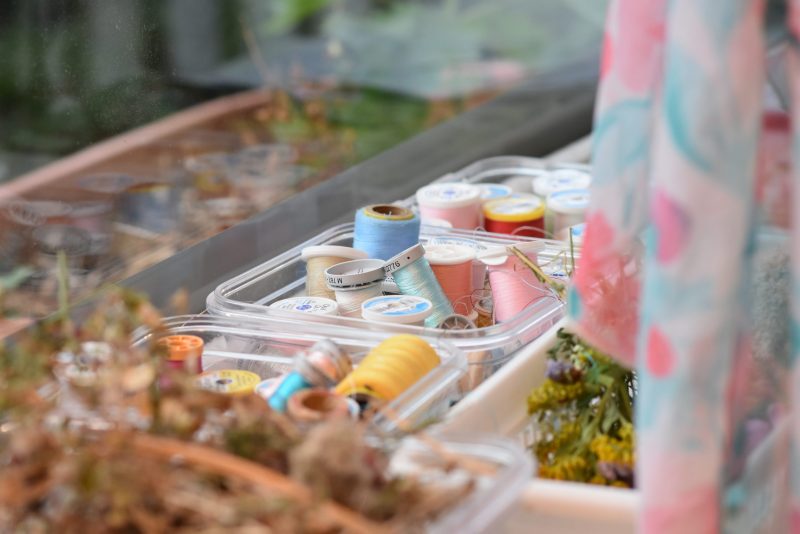With the average Quebecer spending approximately $458 over the holidays, as shown through a survey reported by Global News, you can count on people’s wallets being stressed.
Concordia University’s Centre for Creative Reuse (CUCCR) and the Art Hive hosted a workshop titled “Don’t buy that!” on Dec. 4. Teaming up with Sustainability Ambassadors, the workshop offered alternative gift-giving ideas by creating their own holiday presents and decorations.
Arrien Weeks, a coordinator for the CUCCR, explained that wrapping, purchasing and even making gifts can create lots of waste. “we just came together to try and change that,” Weeks said.
The event, hosted downtown at the Hive, included four different stations. Each was curated to a specific need: a card-making station, ornament crafting, knitting help, and their popular beeswax wraps workshop. It also included vegan baked goods made by Devonly Bakes, a student-run catering service.
Materials used at the workshop were all reused or recycled. “I’m hoping it can make people rethink how they approach gift making, gift-giving, and just trying to reduce people’s consumption at the end of the day,” Weeks said.
The Wednesday evening crowd consisted of a mix of Concordia students, alumni and other event-goers who had never even been to the campus before. Abigail Lalonde, an avid knitter who volunteered for the event said, “The skills that we share with each other are useful. It supports a really good state of mind, which is self-sufficiency. I hope that people can come and learn something. That they can feel included. That they can share with someone.”
Kate Evoy, a student at Concordia, brought her friend Lexi Benware along to the event. The pair was eager to try different arts and crafts. When asked about the workshops’ value, Evoy said “Obviously the sustainability is a huge part of it. Mixed with a community atmosphere, I think that’s such a good way to introduce people to sustainability and the effects of consumerism and all that.”
Events like this one help build a culture around sustainability efforts,” said Benware. “It’s not just one person doing it – people are coming together and making it more normal and natural for people to do.”
The two friends believe that presenting alternatives to the materialistic holiday we all love can educate people on the negative effects of consumerism. Evoy said instead of the typical dooms-day rhetoric she’s used to, she was warmly welcomed.
“It’s more like, come to partake in this, and it’s fun, and we’re doing good things,” she said.
Ivan Chamberland, a Concordia alumna, was inspired by the ingenuity of beeswax wraps. In today’s throw-away society, Chamberland finds herself excited to learn new ways of consuming alternatives to disposable items.
Photo by Laurence B.D.
